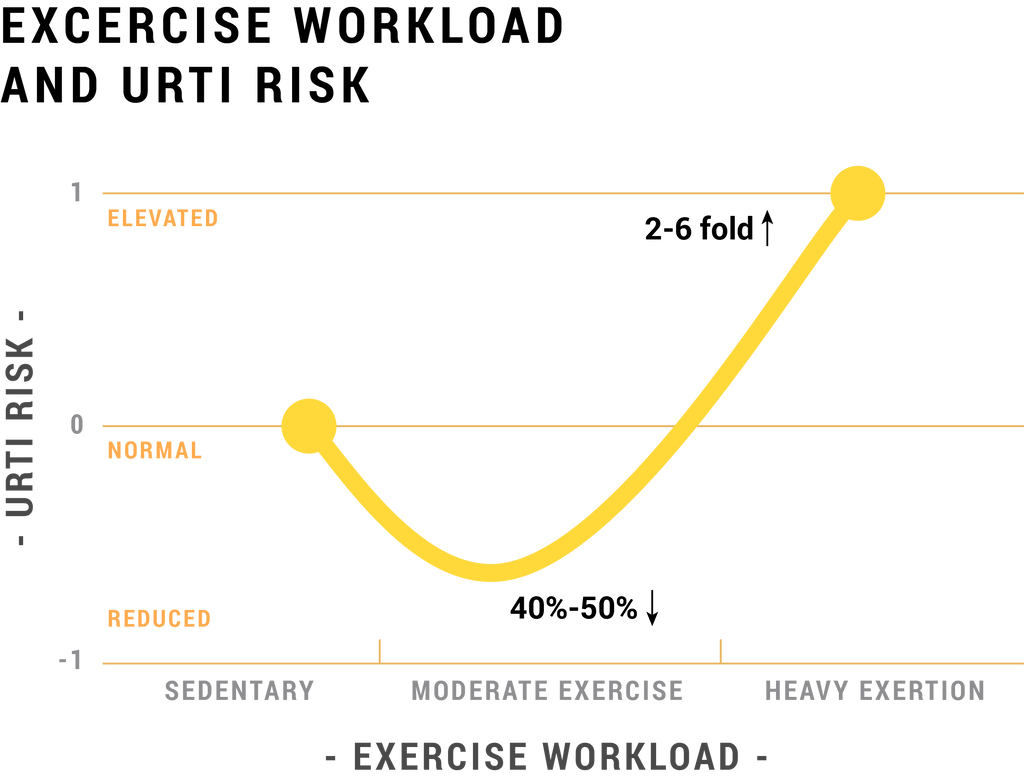How to Keep Athletes from Getting Sick: Training Load Matters!
We often think about monitoring training load because of its relationship with injury – like a pulled hamstring; however, training load is a stress not only to the bones, muscles and tendons but also to the immune system and thus can impact susceptibility to illness such as the common cold.
Like all major systems of the human machine, the immune system is complex. It is composed of hundreds of cell types that are located all the way throughout the body (skin, bone, blood, lymph, spleen, mucosa). These immune cells must distinguish between normal, healthy cells and unhealthy cells by recognising a variety of "danger" cues. In 5th grade language – it attacks germs and keeps us healthy. It’s the body’s defence system.
The immune system is very responsive to exercise, with the extent and duration reflecting the degree of physiological stress imposed by the workload. In a recent article, renowned exercise immunologist Dr David Niemann highlighted the role of exercise on the immune system.
Here are some highlights and key points.
A very early study in 1902 of Boston marathon runners showed that changes in white blood cells paralleled those seen in certain diseased conditions, and additional studies in the 1980s provided the evidence that heavy exertion was associated with temporary immune dysfunction, elevated inflammatory biomarkers, and increased risk of upper respiratory tract infections.
These observations were occurring at the same time that moderate amounts (30-60 minutes) and intensities (60% max heart rate) of exercise were happening and were related to a reduced risk of upper respiratory tract infections. Meanwhile, sedentary individuals were at an increased risk of URTIs. Collectively, these studies established the classic J-shaped curve of exercise workload and risk of URTIs (eg. the common cold).

Much of early work on the increased risk of URTIs and compromised immune function of ‘heavy exertion’ was conducted in endurance athletes (long distance runners, swimmers, cyclists) and among Olympic competitors. Data from International Olympic Committee (the IOC) showed that 2% to 18% of elite athletes experience illness episodes during international competition events (with ½ of illnesses being URTIs), with higher proportions for females and endurance athletes. Another study of German athletes showed that URTI risk was highest in endurance athletes who also reported significant stress and sleep deprivation.
As mentioned, many of these early studies were on endurance athletes. Now there is an increased interest and sport science efforts in field-based team sports (soccer, rugby, football, lacrosse) along with the monitoring of training load. However, most of these studies in team-sport athletes using GPS or sRPE as an indicator of training load focus on risk of injury, with some evidence of relationships with illness.
There certainly remain many questions about the relationship between training load and illness in team sport athletes. It could be that the increased illness is due to disrupted sleep, poor nutrition, and stress. Remember the German study from above. Eureka! Recovery is a vital part of the training process (Stress + Rest = Growth). Get the cornerstones right – nutrition and sleep. Find time to truely relax, do some yoga or meditation to reduce stress.
Here are some guidelines to reduce illness in team sport athletes:
- Practice good hygiene (not sharing drinks, limit hand-to-face contact, wash hands, etc.)
- Limit or do not expose other athletes to infected athletes
- Develop a detailed, individualised training and competition plan that also provides for sufficient recovery using sleep, nutrition, hydration, and psychological strategies.
- Use small increments when changing the training load (typically less than 10% weekly).
- Monitor for early signs and symptoms of over-reaching, overtraining, and illness.
- Avoid intensive training when ill or experiencing the early signs and symptoms of illness (which can make the illness more severe and prolonged).
- Gradually return to training following an illness.
If you want to learn more about how SPT GPS can improve your team's performance and prevent injuries, contact our team to take you through a free demo by clicking here.
Reference: DC Nieman, LM Wentz. The compelling link between physical activity and the body's defence system. Journal of Sport Health Science 8(3):201-217, 2019